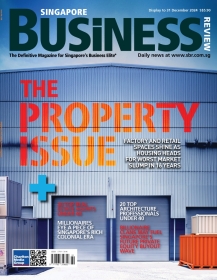
M&As seal the endgame for Singapore's graduating startups
The market can expect a minimum of 250 M&As annually from 2020.
Singapore businesses that have achieved enough scale to graduate from the startup scene have been steadily maintaining the trend towards M&As as their main exit route instead of going public like their counterparts in US and China, proving that acquisitions continue to be the main growth engine of startup exits in Southeast Asia.
A minimum of 250 M&A’s are expected to take place in the region each year from 2020, reflecting a 500% increase in M&A exits from the number expected in the 2015 to 2020 period, according to an earlier report by venture capital firm Golden Gate Ventures.
The report added there have only been 11 tech IPOs in SEA in 2005 to 2016 whilst there have been 127 acquisitions over the same period as the VC firm pointed out that there have been 145% more M&As than flotations in the past ten years.
The explosive growth of new institutional funds and a shift towards later-stage funding also bodes well for startups seeking that one extra push towards their well-deserved endgames.
“In my opinion yes, mergers and acquisitions are still the dominant method of exit for startups in Singapore,” Jackie Lam, co-founder of startup research platform Oddup told Singapore Business Review. “I believe the issue here is Singapore lacks a domestic market. Homegrown startups usually do not have the opportunity to scale to a level where an IPO is necessary and a cost effective mean of raising money.”
In addition to offering a clear financial exit and less compliance costs than an IPO, Lam notes that M&As can provide founders with an easy way to maintain their salary and designation but no longer assume any associated risk. On the flipside, M&As usually offer a fixed upside and a smaller liquidation event.
On the other hand, startups opting to go public might cash in on higher valuations but may in turn surrender their independence to public shareholders as business priorities increasingly shifts away from growth to improving share price.
Public listings are also a costly process with Mainboard listed equity securities subject to a minimum initial listing fee of $100,000 and a maximum fee of $200,000 based on $100 per million dollars or part thereof of the market value at admission whilst listed equity securities in the Catalist need to shell out a minimum initial listing fee of $30,000 to a maximum of $100,000, according to SGX data.
“As a rough guide, the cost of raising less than USD$50 million by IPO is likely to be around 5% of the amount raised. In contrast, the cost of raising more than USD$50 million by IPO is likely to be less than 5% of the amount raised,” law firm Drew & Napier noted in an earlier report.
Such was the path shunned by budget hotel network startup ZEN Rooms who earlier raised US$15m from South Korean hotel app creator Yanolja Co. in exchange for a significant strategic stake with the right to acquire 100% of ZEN Rooms in the future.
“For ZEN Rooms we evaluated the IPO briefly but found it still very cumbersome and low liquidity option such that a Corporate with Yanolja exit was a much better. Further with such a transaction we are able to benefit tremendously from the synergies with Yanolja and grow much faster as a result, something that is not possible with an IPO,” said Kiren Tanna, founder of ZEN Rooms.
Pooling expertise and talent could also prove to be an effective way to ensure the sustainability of budding startups especially against a dismal turnout revealed by the findings of a report by Ministry of Trade and Industry (MTI) economists that pointed out that out of the 460,000 new firms formed during 1998 to 2017, only 984 were able to successfully exit through acquisitions or flotations.
“You can do it yourself or you can partner with others,” said Choo Eng Chuan, EY Asean Growth Markets Leader “In today’s very competitive world, more collaboration is better than none.”
Improving the Singapore bourse
IPOs, however, remain just as viable an exit option but the Singapore bourse appears to be far from the top choice for startups choosing the road less travelled for their endgame plans.
The Australian Stock Exchange (ASX) has emerged as one of the leading destinations for tech companies in Southeast Asia aiming to go public with Golden Gate Ventures data noting that five out of eleven ASEAN tech IPOs in 2001-2015 opted to list on the ASX including Netccentric, Migme and Ensogo who all hail from Singapore.
“Singapore startups also prefer to list on the ASX rather than the SGX as the investors in Singapore are less savvy and usually prefer large cap "blue chip" equities,” observed Lam.
Also read: Singapore IPOs lag Asian peers as homegrown firms rush to list abroad
The lack of liquidity for tech investment in regional exchanges is a considerable hindrance for startups aiming for public listings, noted Justin Hall of Golden Gate Ventures, although Singapore has been making significant inroads to improve the attractiveness of its bourse.
“More recently, I'm seeing these local markets becoming a destination for local or regional companies looking to IPO -- on SGX, for example -- and I see this trend increasing over the next two to three years. It doesn't make sense for me that ASX should secure the lion's share of local tech IPOs,” he said.
The sentiment was echoed by ZEN Rooms’ Tanna who pointed out there is still much room left to grow as startup activity in Singapore only started picking up around 2014-2015.
“Further success stories in the past 4-5 years has inspired a whole new generation of founders to startup their own companies,” observed Tanna. “[Y]ou have really seen very bullish sentiment from both investors as well as young people joining startups and building bigger better companies in the last 5 years, as a result we would see more and more exits in this time and going forward. The increasing interest of Chinese, Korean and Japanese strategic investors in the region means that opportunities for exits have only increased.”
Giving the Southeast Asia exit market room to grow from pre-pubscence is something that will come online in the next two to three years.
“Maturity, in my mind, means a viable exit landscape -- which the region has not yet achieved -- but will likely come into its own within the next two to three years. This is not reflective of a fundamental weakness or flaw, but merely a reflection of the funding landscape to date,” argued Hall. “No policies that really need to be done, just time and natural growth. You can't rush exits.”
























 Advertise
Advertise






